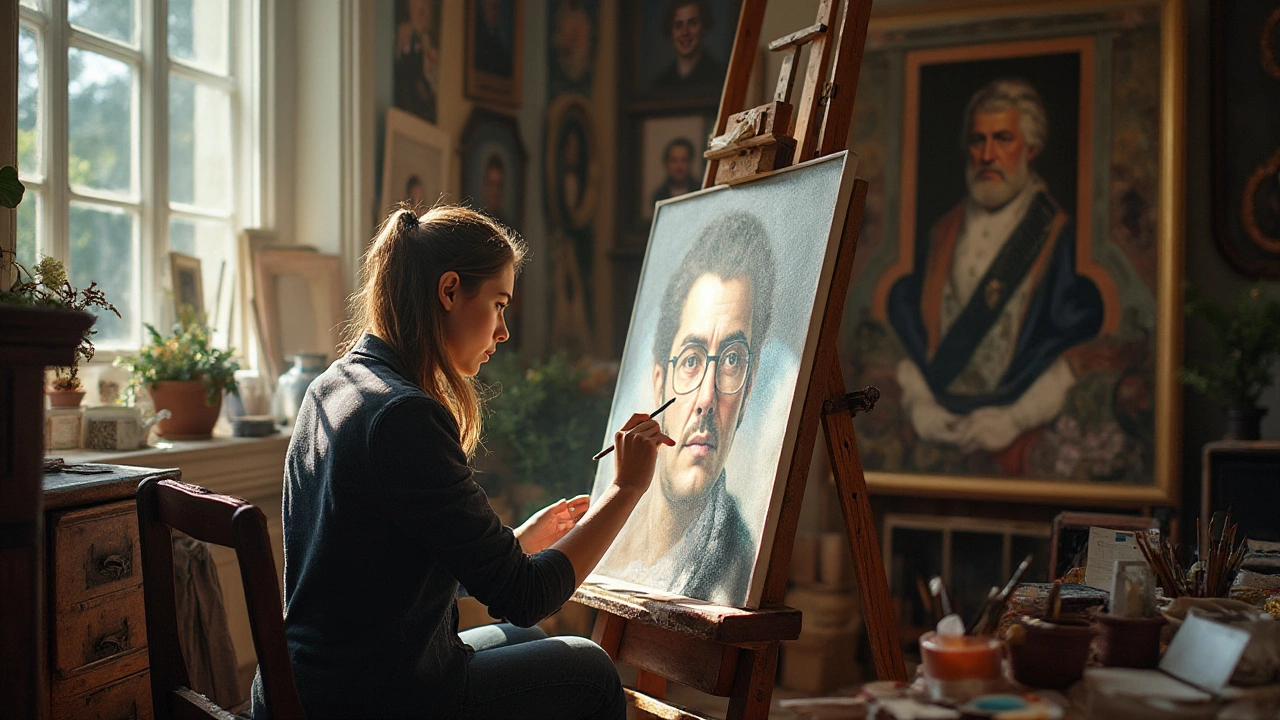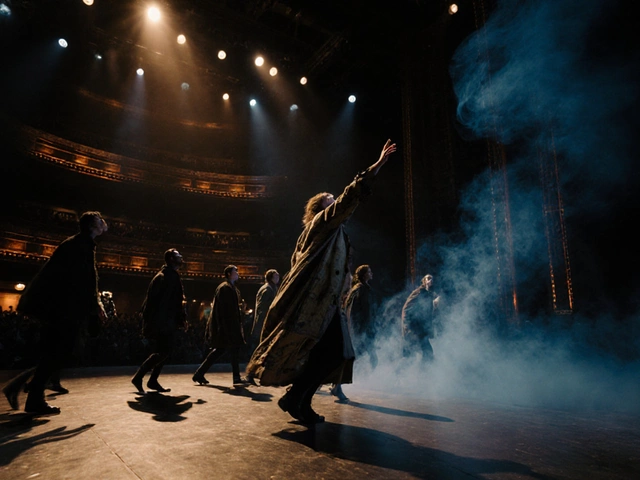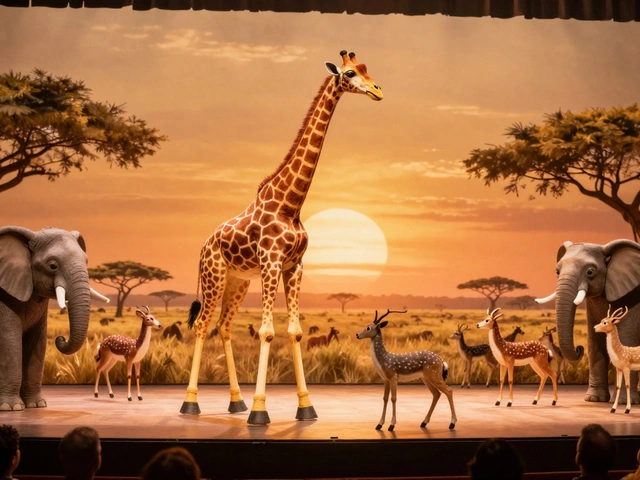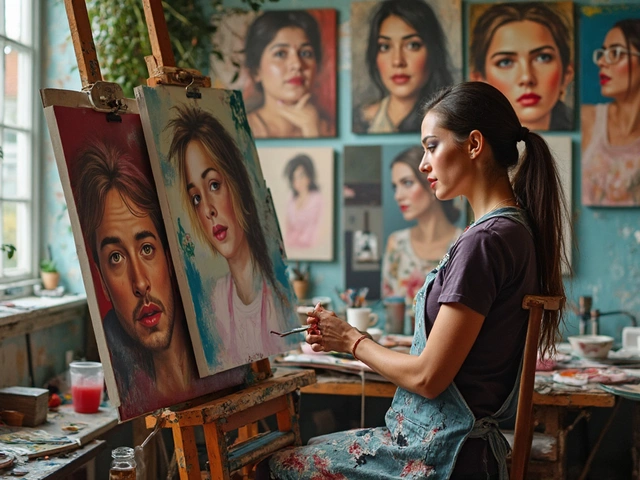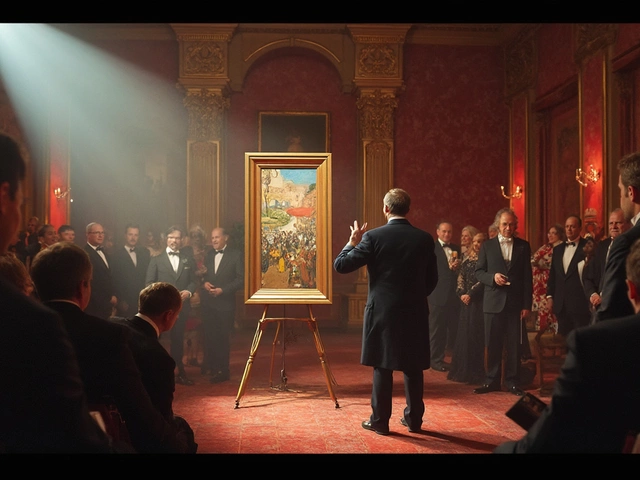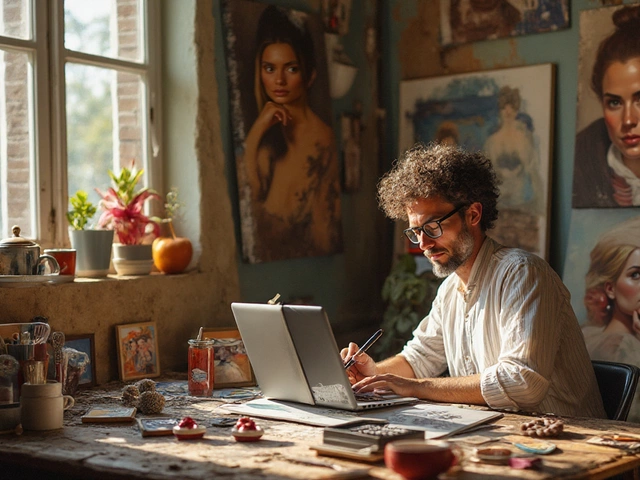Throughout the ages, portrait painting has been a revered form of artistic expression, capturing the likeness and essence of individuals for posterity. This intricate craft, pursued by masters like Leonardo da Vinci and Rembrandt, has always demanded considerable time and patience.
The time it takes to paint a portrait can vary widely, influenced by factors such as the artist's technique, the medium used, and the level of detail desired. Historical records often describe how masters devoted days, weeks, or even months to perfect a single likeness. Today, even with advancements in technology and material, creating a portrait still requires dedication and artistic perseverance.
Join us as we delve into the timelines of portrait painting through the ages, uncover some fascinating historical examples, and offer practical advice for both artists and enthusiasts to deepen their understanding of this meticulous art form.
- Historical Portrait Painting Timelines
- Factors Influencing the Painting Process
- Iconic Portraits and Their Creation Times
- Modern Portraiture: Changes and Continuities
- Tips for Aspiring Portrait Artists
Historical Portrait Painting Timelines
Portrait painting is a distinguished tradition that has stood the test of time, weaving its narrative through the fabric of art history. The meticulous nature of this craft often meant that artists devoted extensive periods to perfecting the portraits of their subjects. Back in the Renaissance period, an era renowned for its artistic innovations, creating a portrait wasn’t just a task but a rite of passage for aspiring masters. Leonardo da Vinci, famed for his Mona Lisa, is reputed to have worked intermittently on the piece for around four years, between 1503 and 1507, capturing layers of depth and mystery in her iconic smile. Such dedication illustrates the unparalleled commitment required in bringing a canvas to life.
The process didn't vary much in complexity even as we moved forward in time to the Baroque era, where artists like Rembrandt spent considerable segments of their lives refining their technique. Known for the emotional depth and intense realism in his self-portraits, Rembrandt often lingered on a single work for months, if not years. Imagine the meticulous layers of oil applied with care, each stroke deliberate and transformative, resulting in the subtle play of light and shadow that defines this period's portraiture.
With the advent of the 18th century's Neoclassical and Romantic movements, portrait painting timelines weren't drastically shortened; instead, they adapted to evolving tastes. Artists such as Jacques-Louis David engineered portraits that captured the political zeitgeist, embedding his subjects like Napoléon in moments of serene authority or dynamic action. The preparation of these portrait paintings often involved laborious sessions observing and sketching the sitter, later leading to days of diligent studio work to achieve the desired grandeur.
The 19th century heralded the rise of Impressionism, which began to challenge traditional timelines. Artists like Claude Monet and Pierre-Auguste Renoir introduced faster gestural brushwork aimed at capturing fleeting moments. Still, despite their seemingly rapid execution, the planning and compositional rigor behind each piece were far from rushed. A common misconception may be that these artists completed their artistic projects overnight, yet many spent countless hours en plein air, waiting for the perfect lighting conditions to paint landscapes and portraits alike.
One must not overlook the significance of innovations in materials and techniques that gradually offered more flexibility to artists. With improvements in paint formulation and brush design through the 20th century, painting processes evolved, although the core spirit of creating a portrait painting celebrated just as much of society's zeitgeist and personal individuality as in earlier times. Even today, artists draw inspiration from their illustrious predecessors, merging traditional craftsmanship with contemporary ideas to continue weaving the narrative of portrait art across generations.
Factors Influencing the Painting Process
The intricate journey of creating a portrait painting involves multiple factors that can significantly influence the length of the entire process. To start, the style of the artist plays a major role. Realism, for instance, demands minute detailing that requires more time compared to an abstract approach where broader strokes and interpretations reign. The pursuit of realism can lead artists to painstakingly layer colors, ensuring that they capture the depth and texture of human skin, the play of light in the eyes, and even smaller elements like hair strands and textiles. Given this substantial commitment to detail, it is understandable why artists like the Dutch master Rembrandt could take several months to complete a single portrait.
Medium selection also affects completion time. Oil paintings, notorious for their slow drying process, often require extended periods between layering for the pigment to dry and set. On the other hand, watercolor might dry faster but demands precision with fewer second chances, which can also add to the artist's workload. Thus, painters meticulous about their artwork's longevity and color vibrancy might revolve their technique around the chosen medium. Leonardo da Vinci, known for his numerous layers of glaze on portraits like the Mona Lisa, famously remarked, "Art is never finished, only abandoned."
"A very subtle, but specific and known fact within the painting world," writes art historian Dr. Alice Rood, "is that the patience an artist invests correlates directly with the emotional and aesthetic depth the artwork ultimately exudes."
Beyond technique and medium, the complexity of the subject itself is a factor. Portraits of individuals with intricate attire, elaborate backgrounds, or multiple figures can take additional time due to the added complexity. When multiple subjects interact in a single composition, the artist needs to manage proportions, perspectives, and interactions seamlessly, which requires careful planning and adjustments, extending the creative timeline. One could argue that the most demanding aspect of rendering a captivating portrait is capturing the essence of the subject, which may only come through prolonged observation and numerous sittings.
The working conditions and the artist's environment further dictate painting timelines. Historically, natural lighting dictated working hours, influencing the time available for painting each day. Today, good studio lighting alleviates this dependency somewhat, but subtleties like lighting can still alter how a painting progresses across the hours. Distractions or interruptions, whether personal or professional, reroute focus and delay the process. However, artists often find that such breaks can provide them with fresh perspectives.
Artistic patience, a term thrown around rather freely, speaks volumes about the time invested in each portrait. Yes, patience is indeed the silent factor that underpins all others. For instance, the consistent repetition of brushwork, color blending, and the temperamental nature of various paints all contribute to the cadence of creation, which shouldn’t feel rushed. As one observes these works in progress, transitions between each phase of the painting highlight the importance of giving each element due attention. This dedication is what separates a rushed attempt from a breathtaking masterpiece, resonating with viewers across centuries.
Iconic Portraits and Their Creation Times
The world of portrait painting is richly adorned with numerous iconic pieces that have shaped the landscapes of art history. Understanding how long these masterpieces took to create unveils much about the determination and tenacity of their creators. One such hallmark is Leonardo da Vinci's "Mona Lisa," which reportedly took him four years to complete. What makes the Mona Lisa particularly compelling, apart from her enigmatic smile, is the meticulous attention to detail and intricate layering techniques Da Vinci employed. These methods demanded copious amounts of time and, as historical accounts suggest, the artist's continuous revisits to refine his work.
In the Baroque era, the eminent artist, Rembrandt van Rijn, known for his deep understanding of human emotion and masterful use of shadow and light, took extensive time with his portraits too. His "The Night Watch," although commonly considered a group portrait, reflects the intricate process and timing typical of his work. It took roughly three years to create, a testament to his patience and dedication to capturing the essence of his subjects. Rembrandt was known to once say,
"Painting is the grandchild of nature. It is related to God."This quote indicates the profundity with which he viewed the act of creation – an endeavor not to be rushed.
Moving to more contemporary times, another portrait that commands attention is Pablo Picasso's "Portrait of Gertrude Stein," completed over the course of several months between 1905 and 1906. Picasso reportedly struggled with accurately capturing Stein’s character, ultimately deciding to paint her with imaginary eyes since he famously said she would become Stein. The creation process of this piece was as much about the artist’s internal dialogue as it was about putting paint to canvas.
Such timelines are not merely a reflection of the artist getting the likeness right but are equally a journey into the mediums and techniques involved. Titian, an artist from the Italian Renaissance era, showcased his expertise through victims of his thoughtful brushwork, investing years into paintings like "Assumption of the Virgin," which was completed over two years. These masterpieces often involved layering oil paints, which necessitated periods of drying between sessions.
In examining these creation times, one can appreciate the unique intersection of vision and labor that defines historic contributions to the genre. There is a shared understanding among these artists that a portrait is not merely capturing a face but encapsulating a story, sometimes revealed to the artist only after spending months or even years with the subject’s likeness. The passage of time woven into each brushstroke speaks volumes about their artistic dedication, producing works that resonate with art lovers then and now.
| Portrait | Artist | Completion Time |
|---|---|---|
| Mona Lisa | Leonardo da Vinci | 4 years |
| The Night Watch | Rembrandt van Rijn | 3 years |
| Portrait of Gertrude Stein | Pablo Picasso | Months |
Modern Portraiture: Changes and Continuities
As centuries rolled by, the landscape of portrait painting transformed dramatically, influenced by cultural shifts, technological advances, and broader accessibility to artistic tools. While the core intention remains—to capture the essence of a person—modern artists now find themselves amidst a myriad of choices that affect both their painting process and the timeline of creation. The introduction of digital tools has particularly revolutionized this art form, allowing artists to play with virtual brushes and limitless color palettes, often completing pieces much faster than traditional methods allow. Yet, despite these advancements, many artists still choose to embrace classical techniques, valuing the tangible connection between the brush, the canvas, and the subject.
The journey of modern portraiture is a dance between change and devotion to age-old practices. Artists like Kehinde Wiley and Cindy Sherman have pushed boundaries, using their works to challenge traditional narratives and expectations. In an age where speed seems of the essence, it's interesting that some artists intentionally slow down the process, choosing to work in oils or pastels, elevating detail and texture over time efficiency. This act pays homage to historical art while injecting a contemporary twist, indicating the aesthetic trajectory has shifted, yet certain elements endure. It's worth noting that with the advent of digital media, the concept of a portrait has expanded, embracing not just visual likeness but also the identity we project online.
"Art must be an integral part of our lives." - Pablo Picasso
In terms of technique, many modern artists capitalize on mixed media, combining traditional with cutting-edge, translating into unique textures and layers that are simultaneously realistic and abstract. This has blurred the boundaries of realism and modern art, challenging viewers' perceptions. The contemporary trend sees artists adopting new materials, panels, and even virtual canvases, with a rise in those working solely in the digital realm. The proliferation of art schools and online tutorials has democratized the art form, creating a vibrant community that shares techniques and feedback, perpetuating growth and evolution in the field.
Beneficial Technological Advancements
Technology has undoubtedly streamlined various aspects of the portrait painting process. Devices like tablets equipped with styluses allow for intricate detail work without the fear of permanent mistakes. This can reduce the lengthy timelines historically associated with creating masterpieces. Software programs like Adobe Photoshop or Corel Painter simulate brush strokes and textures, enabling artists to experiment endlessly with color and form without wasting physical resources. Yet, traditionalists frequently assert that these digital methods might not replicate the emotional connection instilled by physical creation on canvas, a debate that continues to spark passionate discussions within art communities.
A balance between tradition and innovation characterizes the realm of modern portraiture. While changes abound, the continuous thread connecting current practices with their predecessors is the profound commitment to expression. By observing these transformations—through technology, material use, and concept expansions—we see not just the art itself evolving, but also a redefinition of what it means to encapsulate a moment in vibrant, encapsulating likeness. The appreciation for this art form remains undiminished, as artists breathe life into their subjects, one brushstroke, digital or otherwise, at a time.
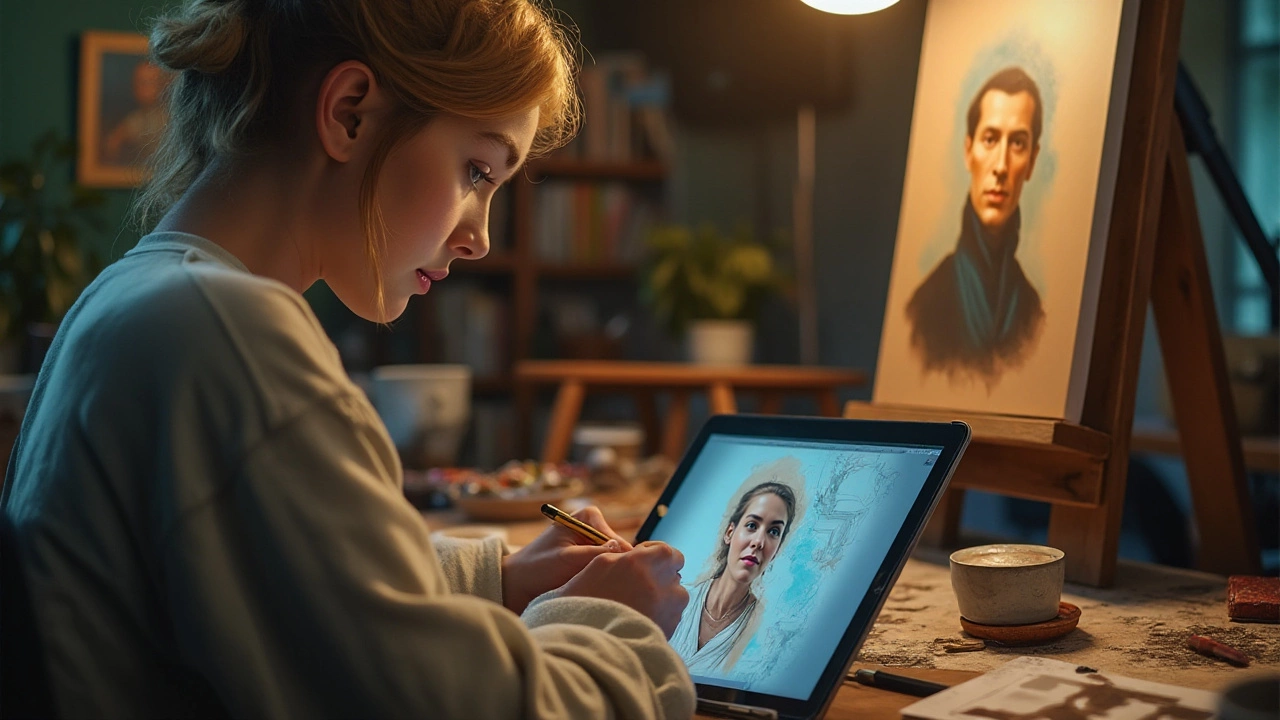
Tips for Aspiring Portrait Artists
Diving into the world of portrait painting can be both exhilarating and daunting, especially when one is striving to emulate the great masters of art history. The journey often begins with the understanding that each brushstroke carries more than just paint—it carries patience, practice, and a bit of the artist's soul. To excel, aspiring portrait artists should invest time in studying the anatomy of faces, familiarizing themselves with human expressions and proportions, and honing their observation skills. One cannot underestimate the power of sketching; it forms the bedrock of a great portrait. Observing how light interacts with the features, falling gently over curves of the face or casting shadows under the chin, is an essential skill that separates a flat depiction from a lifelike masterpiece.
For many artists, working with various mediums—be it oil, watercolor, or pastel—provides a unique perspective on technique and texture. Each comes with its unique challenges and advantages. Oil, for instance, is revered for its rich pigments and malleability, allowing artists to develop layers over time. In contrast, watercolor demands a swift yet decisive hand, often leaving little room for error. As one famous artist once remarked,
"Every portrait that is painted with feeling is a portrait of the artist, not of the sitter." —Oscar WildeThis quote beautifully captures the essence of why choosing the right medium is so crucial; it becomes an extension of one's self-expression and emotion.
Establishing a routine and workspace that nurtures creativity is another vital element in the ongoing learning process. Craft a space that offers both tranquility and inspiration, with appropriate lighting and a tidy environment. Consistency in practice mirrors the development of one's individuality and technique over time. Start with shorter sessions to build focus, gradually stretching them as skill and endurance improve. Documenting progress through a visual journal can also serve as a motivational tool, enabling one to reflect on improvement and milestones achieved across time.
Networking and critiques play a substantial role in an artist's evolution as well. Joining local art clubs, participating in forums, or engaging with virtual art communities can offer opportunities for feedback, collaboration, and growth. Constructive criticism, while initially intimidating, often unfolds new avenues of exploration and refinement. In addition, learning about iconic portraits and artists’ backstories unlocks a deeper appreciation for the craft and fresh inspiration. Studying works of art in galleries or museums can instill newfound respect for what constitutes a masterpiece, breathing life into personal ambition.
A habit worth adopting is continuously experimenting outside one's comfort zone. Trying different subjects, styles, or even combining portraiture with other art forms like abstract or surrealism can greatly enhance artistic breadth and versatility. Remember, in the pursuit of perfecting artistic patience, including moments of playful creativity can be empowering, sparking spontaneous insights that enrich one's art. Ultimately, the path of an aspiring portrait artist is one of relentless learning, with each completed work serving as a stepping stone toward discovering one's unique voice within the vast tapestry of art.
